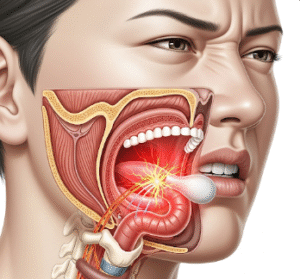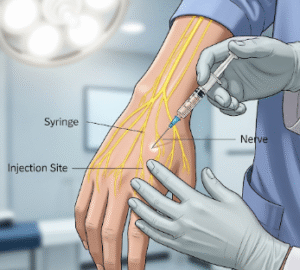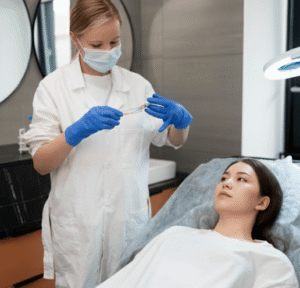What it is
An ovarian cystectomy is a surgical procedure to remove cysts from the ovary while preserving the ovary itself. Ovarian cysts are fluid-filled sacs that commonly develop on or inside the ovaries. Most are benign and may resolve naturally, but some cause pain, irregular periods, or fertility issues, requiring surgical removal.
In Korea, ovarian cystectomy is performed with advanced laparoscopic and robotic-assisted techniques, offering minimal scarring, faster recovery, and precise ovarian preservation—especially important for women planning pregnancy.
➡️ Key facts about ovarian cystectomy:
- Preserves ovarian tissue and fertility
- Minimally invasive procedures widely available
- Outpatient or short hospital stay depending on cyst type and surgery complexity
Why it’s done
Doctors recommend ovarian cystectomy when cysts cause symptoms, complications, or raise concerns about malignancy.
✔️ Medical reasons include:
- Persistent or large cysts not resolving on their own
- Severe pelvic pain or pressure symptoms
- Irregular or heavy menstrual cycles linked to cysts
- Torsion (twisting of ovary) causing emergency pain
- Suspicion of cancerous or precancerous growth
- Fertility concerns, especially if cysts interfere with ovulation
✔️ Benefits of ovarian cystectomy:
- Relieves pain and restores normal menstrual cycles
- Preserves ovarian function and fertility
- Provides tissue samples for lab testing to rule out cancer
- Reduces risk of ovarian torsion and rupture
Alternatives
Not all ovarian cysts require surgery. Depending on size, symptoms, and risk, alternatives may be explored.
🔹 Watchful waiting:
- Small, simple cysts may shrink or disappear naturally
- Regular ultrasounds used to monitor progress
🔹 Medication therapy:
- Hormonal contraceptives may help prevent new cyst formation
- Not effective in removing existing cysts
🔹 Oophorectomy:
- Removal of the entire ovary if the cyst is large, recurrent, or highly suspicious for malignancy
- Considered only when ovarian preservation is not possible
🔹 Aspiration:
- Draining cyst fluid with a needle (rarely used, high recurrence risk)
Preparation
Good preparation ensures safe and effective treatment.
➡️ Medical preparation:
- Ultrasound or MRI to assess cyst size, type, and characteristics
- Blood tests, including CA-125, to evaluate cancer risk
- General health checkup to prepare for anesthesia
- Reviewing fertility plans with the doctor
➡️ Personal preparation:
- Fasting before surgery if anesthesia is required
- Arranging hospital admission (short stay may be needed)
- Packing comfortable clothing and essentials for recovery
➡️ Mental preparation:
- Understanding possible outcomes, including conversion to oophorectomy if necessary
- Preparing emotionally for temporary restrictions after surgery
- Discussing concerns about scarring, fertility, and recovery
How it’s done
In Korea, ovarian cystectomy is most often performed with minimally invasive techniques for precision and faster recovery.
✔️ Surgical approaches:
➡️ Laparoscopic cystectomy
- Small abdominal incisions for inserting a camera and surgical tools
- Cyst carefully removed while preserving healthy ovarian tissue
- Quick recovery and minimal scarring
➡️ Robotic-assisted cystectomy
- Robotic arms used for enhanced precision and control
- Ideal for complex or deeply embedded cysts
- Reduced blood loss and faster recovery
➡️ Open (abdominal) cystectomy
- Larger incision used for very large or complicated cysts
- Less common with modern techniques but still performed when needed
✔️ Step-by-step process:
- Anesthesia (general) administered for patient comfort
- Small incisions made for laparoscope or robotic instruments
- Cyst carefully separated from ovary without damaging healthy tissue
- Cyst removed through incision and sent for pathology
- Uterus and ovaries checked for other abnormalities
- Incisions closed with sutures
✔️ Duration:
- Surgery typically lasts 1–2 hours depending on cyst complexity
- Patients usually discharged within 1–3 days
Recovery
Recovery depends on the surgical approach but is generally quick with modern techniques.
➡️ Immediate recovery:
- Mild abdominal pain and bloating
- Fatigue from anesthesia, but walking encouraged within hours
- Hospital stay: same day or 1–2 days for laparoscopic/robotic, longer for open surgery
➡️ Physical recovery:
- Return to light activities in 1–2 weeks for minimally invasive surgery
- 4–6 weeks for open abdominal cystectomy
- Avoid heavy lifting and strenuous exercise until cleared by doctor
➡️ Emotional recovery:
- Relief from pain and anxiety about cysts
- Counseling may help if surgery affects fertility concerns
- Regular reassurance after pathology confirms benign results
➡️ Key recommendations:
- Adequate hydration and balanced diet for healing
- Pain relief medications if needed
- Regular follow-up visits and ultrasound monitoring
- Gradual return to physical activity
Treatment option in Korea
Korea is internationally recognized for excellence in gynecologic surgery, including ovarian cystectomy.
✔️ Hospital facilities:
- Equipped with advanced laparoscopic and robotic surgical systems
- Specialized gynecologic units for women’s health procedures
- Comprehensive pre- and post-surgery care programs
✔️ Medical expertise:
- Skilled surgeons with extensive experience in fertility-preserving cystectomies
- High success rates with minimal complications
- Personalized surgical approach based on cyst type, patient’s age, and fertility goals
✔️ Postoperative care:
- Continuous monitoring to ensure proper healing
- Fertility counseling and support for women planning pregnancy
- Access to integrative recovery programs including nutrition, traditional Korean medicine, and lifestyle guidance
✔️ Cultural aspect:
- Korea places great emphasis on women’s reproductive health and fertility preservation
- Post-surgery, women often benefit from Sanhujoriwon-style recovery centers offering holistic rehabilitation
➡️ Highlight: Ovarian cystectomy in Korea provides state-of-the-art minimally invasive surgery, fertility-focused care, and holistic recovery programs, making it one of the safest and most effective options for women worldwide.












